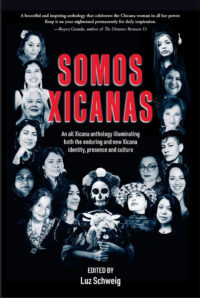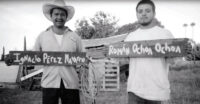It wasn’t quite four in the morning when my wife and I were abruptly awakened by the doorbell. Thoughts raced through my mind. Who was it? The police, immigration, or a relative with bad news? Cautiously we peered out the window and saw it was my sister-in-law. She could hardly talk. “Sonoma is burning up,” she told us, “we have to get out.”
“What do you mean?” I asked her. She replied that the manager of her apartment building had told all the tenants they needed to get out. “We’re going to Sebastapol,” she said as she left.
We couldn’t get back to sleep. I tried to tune in to local radio and television, but nothing seemed to be going on. I told my wife that I’d drive around to find out. Neighbors were up, too, outside. I passed a couple of gas stations packed with cars waiting to pump gas. Arnold Drive was crowded with cars headed toward Petaluma.
I filled my gas tank and returned home where my wife and children met me, ready to leave. My daughter with her cat and my son with his dog. “But, where will we go?” they wanted to know. I told them I didn’t know, but it looked like the whole world was getting out of Sonoma. We headed for a relative in Sebastapol. On the way I started to get calls, texts and emails from family, friends, and people in the community. Everyone wondering what to do, where to go, who was going, and when?
It was a long day, filled with uncertainty, far from my home, my community and my people. Without knowing what was going on. Or who to ask. Or where to go, what to do. And all this questioning led me to realize that many of our families would be finding themselves in the same uncertainty. And that’s what made me come back.
I’ve always believed that when you are called to serve you’ll know where you can make a difference. For the next seven days I became the point of connection between all those families that were away from their homes, their community. Answering questions, helping orient people. It was clear that the most important thing I could do was to help our community remain calm.
Every day I made videos of our valley, showing what was going on to our families who found themselves in shelters in Petaluma, Sebastapol, Novato, San Rafael and Vallejo, and who had taken refuge in San Francisco, Sacramento, Oakland and Los Angeles. Like the smoke, the information traveled far, reaching Utah, Idaho, Indiana and Mexico where relatives of Sonoma families live.
Now that the fires are out and our families are returning to their normal life in Sonoma, it’s worth considering what happened, both the short term and long term effects.
It’s my hope that when this period of distributing food, clothing and gift cards ends, we take a moment for dialogue. Take time to ask our community how they felt when they were forced to leave their homes before dawn, wondering if this would be the last time. What was their experience finding themselves living with, sharing meals with, strangers in a strange community.
The working class in our community has often been lacking for the basics – housing, wages, medical services, for some even food and clothing; but the trauma of being displaced during this emergency was something new. And these are the ones in our community that have been and continue to be overlooked.
So, when all the reports are done, I invite you to consider that there were people here all along hoping for your help – with high rents, transportation, mental health, health care, access to education, and fair wages.




Be First to Comment